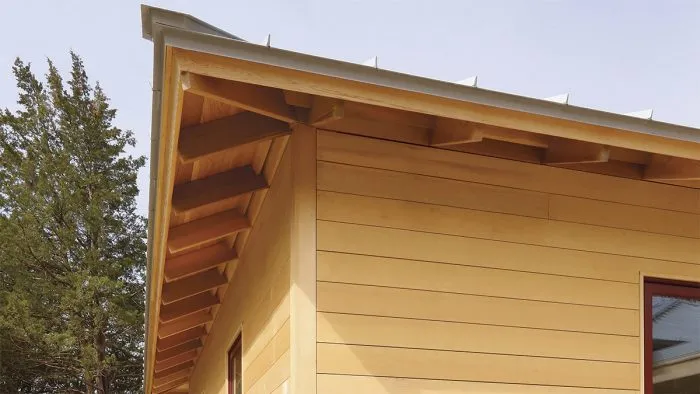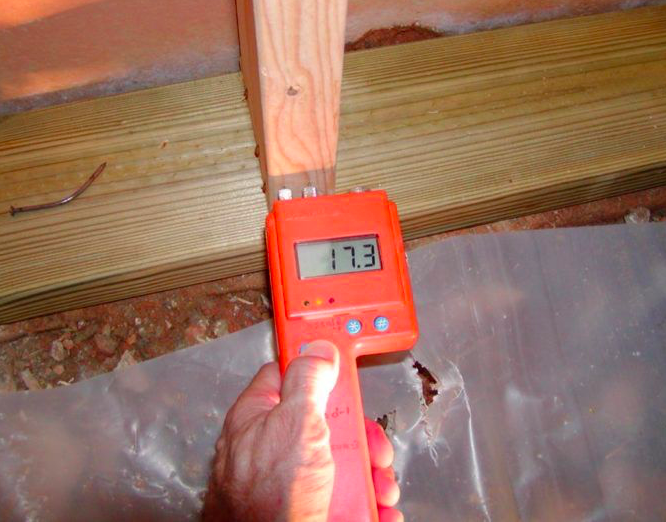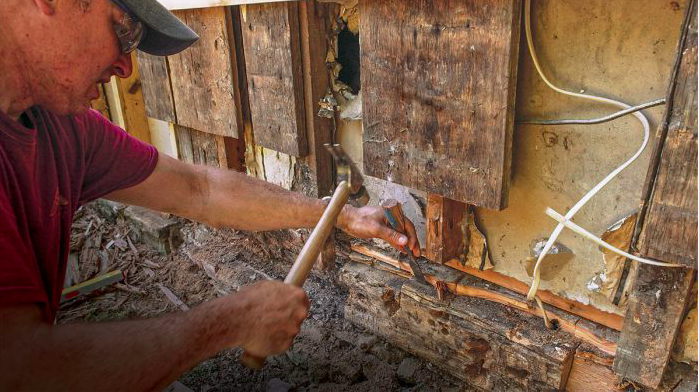
The phenomenon of wood expansion and contraction is commonly known among builders, and it has the attention of reader jamesboris, who seeks advice regarding his new build in Texas. In April, he installed 1200 sq. ft. of select Douglas fir 2×6 tongue-and-groove for a ceiling finish on a timber-framed pyramidal hip roof. The T&G was kiln-dried to 14% moisture content, and finished with an oil stain. He used 3-in. construction screws and 3-in. ring-shank nails at each nailing point, and employed straps and a dead-blow hammer to keep the boards tight as he fastened them. During the next two weeks, the roof assembly was drenched with rain.
In the latter part of May, he installed Solitex Adhero membrane on the roof, then sheathed and Tyvek’ed the walls. He began to condition the structure with two 1-ton portable A/C units. In early June, his region underwent a prolonged heat wave of 103°F-plus for two weeks. During the last two weeks of June, he applied successive layers of polyiso, plywood, and a self-adhering membrane onto the roof. While inspecting the underside of the roof, he noticed that the previously tight T&G 2x6s were showing gaps between boards, up to ½-in. wide. Having worked on the building for three years, jamesboris admits that he is discouraged, especially because the exposed 2x6s and rafters were to be a defining element of the structure.
His question is: How did this happen? That is the topic of this Spotlight.
Measuring moisture content
Several readers responded by discussing the moisture content of the wood. Citing this article in Fine Homebuilding magazine, Malcolm Taylor writes: “The moisture content of framing lumber should be in the 10% to 14% range. Kiln-dried material is generally around 6%. Unfortunately, I think it is as simple as…
Weekly Newsletter
Get building science and energy efficiency advice, plus special offers, in your inbox.

This article is only available to GBA Prime Members
Sign up for a free trial and get instant access to this article as well as GBA’s complete library of premium articles and construction details.
Start Free TrialAlready a member? Log in














3 Comments
"this means that the position or the profile of the boards likely changed noticeably due to this wetting"
Yup. I kept looking for the words "compression set" in this discussion. For those that have the mentioned 'Understanding Wood' book, check out pages 81-83. In furniture, people often blame dry conditions for opened up joints when oftentimes it was preceeded by excessive humidity that caused compression set and thus a much wider crack than dry shrinkage alone. Which is why letting the wood have some room to move can be critical if not guaranteed to be in perfectly consistent RH environments.
"folks who are building with cross-laminated timber or 'mass wood'...are jumping through hoops to make sure that their sky-facing wood slabs are protected from the rain"
I happened to have recently received an email from 475 announcing a new product to address exactly this. Some sort of clear, temporary stick-on water shedding membrane.
Akos had this right. This was much more about the wood getting soaked than the initial moisture content.
Wood shrinks much more in the direction tangential to the growth rings - as compared to the direction perpendicular to the growth rings (IE toward the center of the tree) Thus, if you have quarter-sawn lumber you get much less shrinkage across the width of the plank. Of course, if you want quarter-sawn lumber nowadays, you have to order it custom cut; there is more loss when sawing this way and it is hardly ever done.
Log in or become a member to post a comment.
Sign up Log in